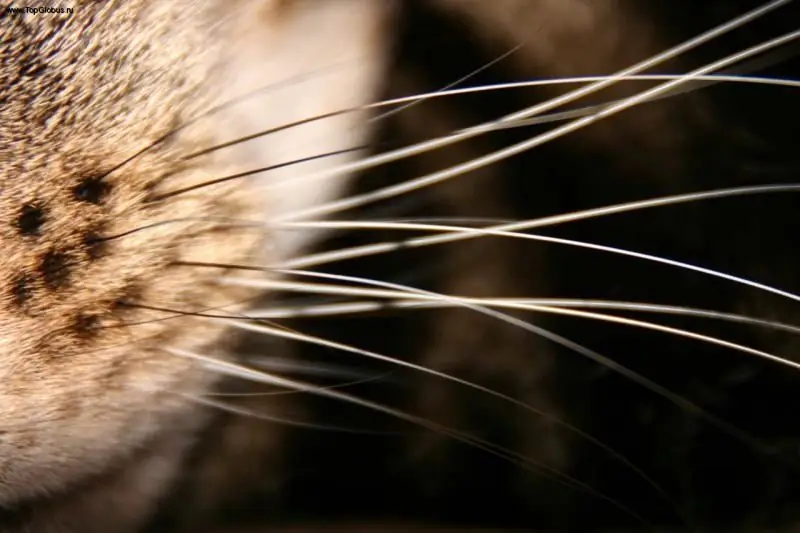
Table of contents:
- Witch hunt: 8 ridiculous reasons from the middle ages to declare a woman a witch
- Have a noticeable mole or birthmark
- The woman is married, but there are no children
- Midwife or healer
- Bright and beautiful appearance
- An elderly and unattractive grandmother
- Grumpy character
- Wealthy and independent lady
- Unusual behavior
- Author Bailey Albertson [email protected].
- Public 2023-12-17 12:53.
- Last modified 2025-01-23 12:41.
Witch hunt: 8 ridiculous reasons from the middle ages to declare a woman a witch

In the XV-XVII centuries, Europe and America were swept by a wave of mass extermination of women. They were subjected to cruel torture, water trials, and burning at the stake. Now all this seems absurd, but in the late Middle Ages anyone could fall into the category of "witches".
Have a noticeable mole or birthmark
It was believed that the witch was marked from birth. On her body, they were looking for moles of large size, with hair or a strange shape: birthmarks in the shape of a hare or a frog's paw were indisputable proof of guilt.
If in the family all women had birthmarks, then the whole family was subjected to destruction in order to eradicate the continuation of the witch family.
The woman is married, but there are no children
Married women without children were also viewed with suspicion and apprehension.
The position of a woman was aggravated if her neighbors were beset by troubles: the death of livestock or unexpected deaths.
Midwife or healer
In ancient times, women healers were considered witches. They turned to them for advice, for medicinal broths and ointments, for help with childbirth. They were appreciated and respected.
Witch doctors were afraid and avoided. And often they lived somewhere in the forest or on the outskirts.
Bright and beautiful appearance

Witches were considered both red-haired young people with green eyes, white skin and a thin body, and burning brunettes with a mesmerizing hypnotic gaze or beauties with heterochromia (multi-colored eyes).
The girls were accused of being overly attractive, which supposedly acted magically, aroused sinful feelings and thoughts, which was equated with witchcraft and devilish spells.
An elderly and unattractive grandmother
Women in old age also became the "subject of attention" of the inquisitors. Especially if they had a physical handicap: lameness, tremors, hunched back, “dry” limbs, too long nose or warts.
It was believed that witches communicate with the spirits of the dead as mediators, and give their sight to the "prince of darkness" in order to see the dead in the world.
Grumpy character
A witch could calmly declare an aunt swearing with everyone.
The owner of these qualities was called a witch, accused of conspiracy with evil spirits and guidance of damage and misfortune. This was often trivial settling of accounts.
Wealthy and independent lady

It was not easy for widows of influential persons and women who were left without brothers, fathers and sons. They were forced to independently manage the entire economy, keep accounting records, protect their property, and participate in litigation.
During the "witch hunt" 90% of executed women were from the upper class, rich and highly educated.
Unusual behavior
Veneration of the Bible and strict observance of its laws were considered indispensable. But besides the biblical rules, there were many restrictions in everyday life.
Any "bachelorette parties" were considered a sabbath. Laughing too loudly could also lead to accusations of witchcraft.
Priests and monks cut their hair in a circle (short hair was left only on the crown and part of the back of the head, and shaved in the middle of the head). For the rest, such a haircut was strictly prohibited.
Any deviation from the standards of behavior and appearance was condemned, and the offender was punished.
Recommended:
Whiskers In Cats And Cats: What Are They Called Correctly And Why They Are Needed, What Will Happen If You Cut Them And Why They Fall Out Or Become Brittle

Features of the structure of the mustache in cats. What are they called and where they are located. What functions do they perform. What problems can a cat with a mustache have? Reviews
Tragedies Of The USSR, Which Were Hidden From The People

The incidents of the USSR, which were deliberately hidden from the people
How Were Graduations In The Soviet Union: A Selection Of Photos

How did the Soviet graduates feel about the graduation, what they wore, what they did. A collection of old graduation photos from the USSR from the 1920s to the 1990s
Soviet Actors Who Were Ruined By Their Own Beauty

Popular Soviet actors who were ruined by their own beauty. Stories of their tragic lives
How Discos Were Held In The 90s: A Nostalgic Selection Of Photos

How discos were held in the 90s. What guys and girls were wearing, what music was popular, etc
